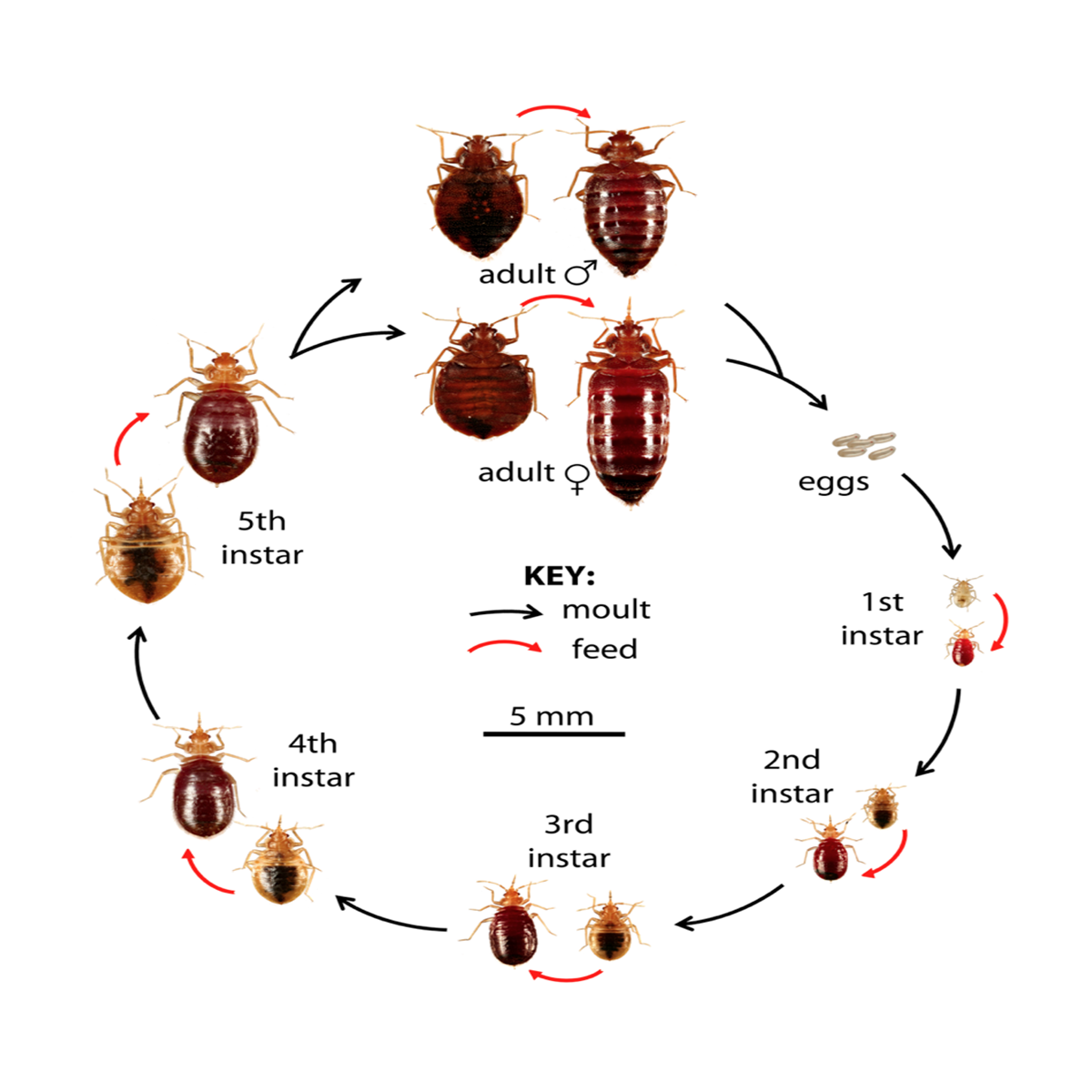LIFE CYCLE & FEEDING
Lifecycle
Bedbugs go through five nymphal (immature) stages after hatching from the egg and before molting one final time to an adult. They require at least one blood meal at each stage. Adults may feed many times throughout their lifespan, every 3-7 days varying with temperature and other factors, with females requiring a blood meal to produce egg batches. Males may feed less frequently. Nymphal stages last from about 4 days to 24 days based on temperature and other environmental conditions. Adults may live for more than a year.
Under optimal conditions, the cycle from egg to egg can take place in under 5 weeks. However, the insects can go for long periods (up to one year under optimal conditions) between blood meals. Females must mate to lay eggs. Mated females lay eggs singly, cementing them to surfaces in crevices and protected areas away from but near a host sleeping area. They average 3-5 eggs per day but may lay as many as 12, producing over 500 eggs in their lifetime. As with other stages, the eggs are very durable and can remain viable for weeks under harsh environmental conditions.
Feeding
The nymphs and adults locate hosts using heat and carbon dioxide sensors, and recognize human hosts through olfactory (smell) receptors on their antennae and mouthparts. Bed bugs normally feed late at night or early morning when the host is in deepest sleep. Most people are unaware when being fed upon – the bed bug is stealthy and its saliva contains desensitizing agents that prevent the host from feeling its mouthparts penetrate the skin.
The bite sites are usually small, pinprick-sized lesions that may or may not become inflamed. Reaction to bed bug bites varies from person to person. Most people show no reaction the first time they are bitten, but subsequent bites may develop into welts that itch. Some people react severely with welts that itch for weeks, and individuals prone to keloid scarring may be affected dramatically. They feed for 3-15 minutes and then leave the host. It is rare to actually find bed bugs feeding. Once in their protected hiding spots, the blood meal is digested. During this process, they will defecate, leaving reddish brown spots that are characteristic of bed bug infestations.

A 1st instar bed bug taking its first blood meal
Sources:
Michigan Manual for the Prevention and Control of Bed Bugs
Colorado State University Extension
United States Environmental Protection Agency

